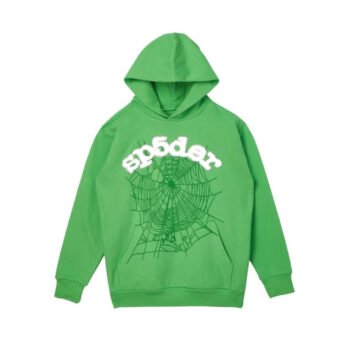The Rise of Digital Platforms:
Fashion communication, once confined to the glossy pages of magazines, Visit now Sp5der hoodie has undergone a remarkable evolution in recent years. The traditional narrative of fashion being disseminated solely through printed media has expanded into a dynamic and diverse landscape, driven by technological advancements and changing consumer behavior. This shift has not only broadened the reach of fashion communication but has also democratized the industry, allowing for greater inclusivity and creativity.
The advent of digital platforms has played a pivotal role in reshaping the landscape of fashion communication. Social media platforms, such as Instagram, Facebook, and Twitter, have become powerful tools for designers, brands, and influencers to showcase their creations and connect directly with a global audience. The immediacy of these platforms enables real-time engagement, breaking down the barriers between creators and consumers.
Fashion influencers, once confined to the glossy pages of magazines themselves, have become key players in shaping trends and influencing consumer choices. Their authenticity and relatability resonate with audiences, challenging the traditional top-down approach of fashion communication.
Inclusivity and Diversity:
One of the most significant transformations in fashion communication is the increased emphasis on inclusivity and diversity. Glossy magazines, with their limited space and often homogeneous representations, struggled to reflect the true diversity of the global population. Digital platforms have allowed for a more inclusive representation of different body types, ethnicities, genders, and styles.
Social media has given a voice to marginalized communities, allowing them to challenge the industry’s norms and redefine beauty standards. The democratization of fashion communication means that individuals who were once excluded from mainstream narratives now have the opportunity to showcase their unique perspectives and styles.
Interactive Experiences:
The traditional glossy magazine offered a one-way communication channel, Check it now https://corteizclothings.us/ with readers passively consuming content. In contrast, digital platforms enable interactive experiences, where audiences actively participate in shaping the narrative. Virtual fashion shows, live streams, and interactive campaigns engage consumers in real-time, creating a sense of involvement and community.
Augmented reality (AR) and virtual reality (VR) technologies have further expanded the possibilities for interactive fashion experiences. Consumers can virtually try on clothes, explore immersive fashion installations, and participate in interactive storytelling, breaking away from the static nature of traditional print.
Sustainability and Ethical Practices:
Fashion communication has also evolved to reflect the growing awareness of sustainability and ethical practices within the industry. Digital platforms serve as powerful tools for raising awareness about the environmental and social impact of fashion. Brands and influencers can share their commitment to sustainability, showcasing eco-friendly practices and promoting conscious consumerism.
The shift towards sustainability has led to the rise of digital fashion, where consumers can purchase and wear virtual garments for social media content without the environmental footprint associated with physical clothing production.
Conclusion:
The transformation of fashion communication from glossy magazines to a diverse, digital landscape signifies a paradigm shift in the industry. The democratization of fashion, emphasis on inclusivity, interactive experiences, and a commitment to sustainability are reshaping the way fashion is perceived, consumed, and communicated. As technology continues to advance, the future of fashion communication holds even more exciting possibilities, breaking down barriers and fostering a more dynamic and inclusive industry.

